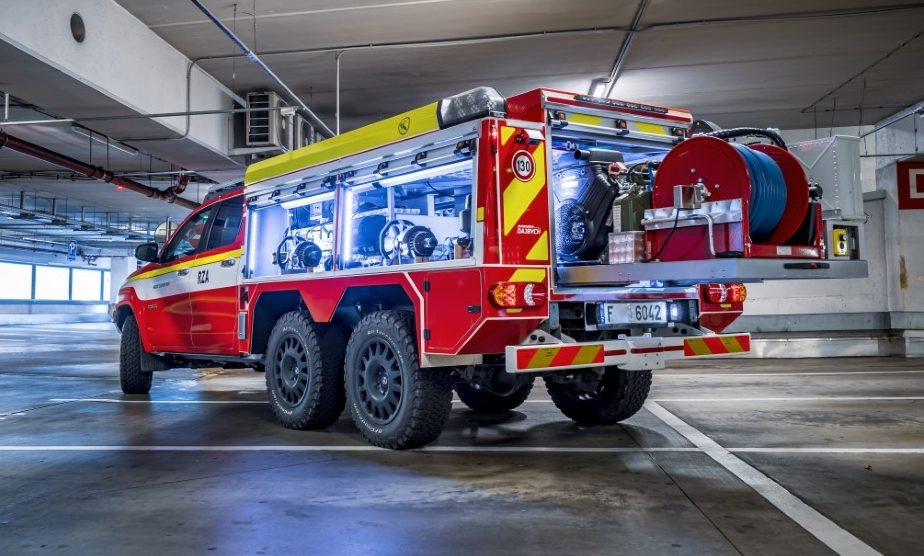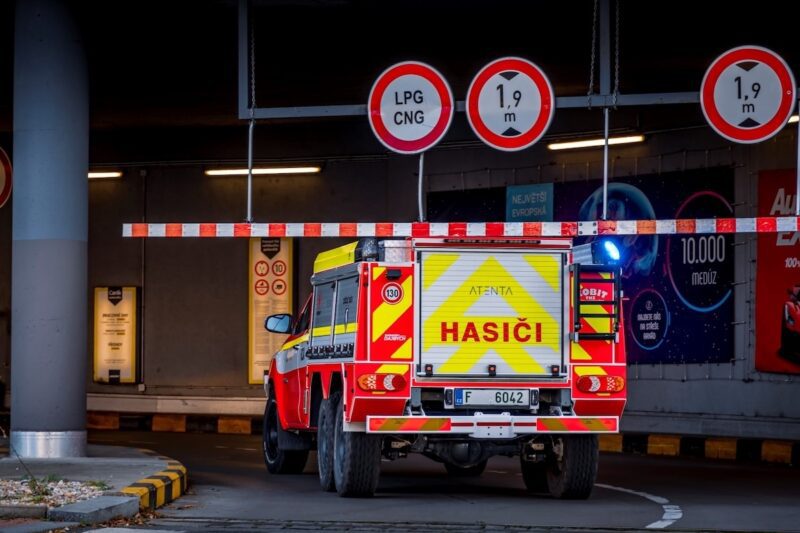Just like the move from horse and cart to the internal combustion engine (and the resultant need to deal with burning petrol rather than hay and/or barn fires containing horses), the move from fossil fuels to electric propulsion has thrown up a new set of firefighting issues to address.
When it comes to EV battery fires, once a battery has gone into ‘thermal runaway”(1), attacking the fire at its source can be hard as battery packs are generally packed into stout containers that are hard to access, let alone further puncture to get water into.
This has the advantage of making it difficult for one EV battery fire to set off anything other than a ‘simple’ car body fire in a nearby EV (i.e not involving any other EV battery), but the container is hard for fire authorities to get into to slow or stop the battery involved before it simply burns itself out.
Previous ideas for dealing with EV battery fires have involved pouring thousands of litres of water over the whole vehicle in an effort to cool the battery and/or utilise special jacks to lift the car and point fire hoses at the underside of the battery.
A more extreme solution has been the development of a shipping container that can be filled with water for dropping a damaged EV into. This however is somewhat impractical even in the open, and impossible in an enclosed carpark.
Another option being marketed is to cover an EV with a fire blanket – which would slow any spread of the fire, but does nothing to stop the thermal runaway as the process once started is self-sustaining through the generation of oxygen and hydrogen in combination with the flammable materials inside the battery casing.
Given that letting a battery ‘burn itself out’ is not an option in confined spaces with adjacent flammable items (like in carparks) or in highly populated areas where exposing the public to extended periods of toxic smoke is not acceptable, it is obvious that firefighting techniques have to evolve to deal with EV fires.
One new approach to the issue is the new low profile Rapid Intervention Vehicle (RIV) by Prospeed Motorsport in England.
Their RIV both carries specialised equipment to fight EV (or other) car fires and is low enough to enter underground and multi-storey car-parks in order to get to the source of a fire more quickly.
This means the RIV can address a fire earlier to potentially prevent it escalating into an uncontrollable one – such as the one in Norway’s Stavanger Airport carpark back in 2020.
(That fire by the way has been shown to NOT have been started by an EV – the cause was an older Opel Zafira – nor was it propagated by EVs. The reason that fire got out of control was due to there being no sprinkler system in the carpark and the carpark being almost full at the time).

In addition to the low height of the RIV, it carries a new firefighting tool designed to better address the specific issue of EV battery thermal runaway: an ultra-high pressure lance system called the ColdCut Cobra system.
This system uses an abrasive suspended in water to pierce a hole through the vehicle floor pan, enabling the injection of high pressure water directly into the battery.
The manufacturer cites independent testing by the Swedish Civil Contingencies Agency that showed the Coldcut Cobra system could prevent cell fire propagation within 10 minutes, using only 240 litres of water – which is just 20% of the water carrying capacity of the RIV.
The RIV is based on a Toyota Hilux, but fitted with an entirely new chassis.
With the replacement chassis and a torque splitter system, the vehicle has been extended to a 6 wheel/6 wheel drive system rated at 5,600 kg Gross Vehicle Weight that offers a 3,000 kg payload, load-space extension of 1,230 mm but with a height of only 1,850 mm, making it low enough to allow access to the majority of parking structures.

The RIV is assembled in York and the company has plans to make a 6×6 conversion module available for export for final assembly at the export location. A trial RIV is currently in use in the Czech Republic, with the vehicle specifically developed to tackle EV battery fires and assist with fast response occupant extraction.
Notes:
- Thermal runaway: where the battery cells short circuit and overheat to the point that they break down, liberating both oxygen and flammable gasses in a self-sustaining reaction that lasts until all the flammable materials within the battery are burnt and/or there is no electrical energy left to sustain the reaction. It is worth noting that the energy available for release in the thermal runaway of a fully charged EV battery is no more than is available from the burning of a full vehicle petrol tank. It is also worth noting here that EV batteries fires are very rare – and occurring far less often than in petrol/diesel/LPG powered vehicles.

Bryce Gaton is an expert on electric vehicles and contributor for The Driven and Renew Economy. He has been working in the EV sector since 2008 and is currently working as EV electrical safety trainer/supervisor for the University of Melbourne. He also provides support for the EV Transition to business, government and the public through his EV Transition consultancy EVchoice.

